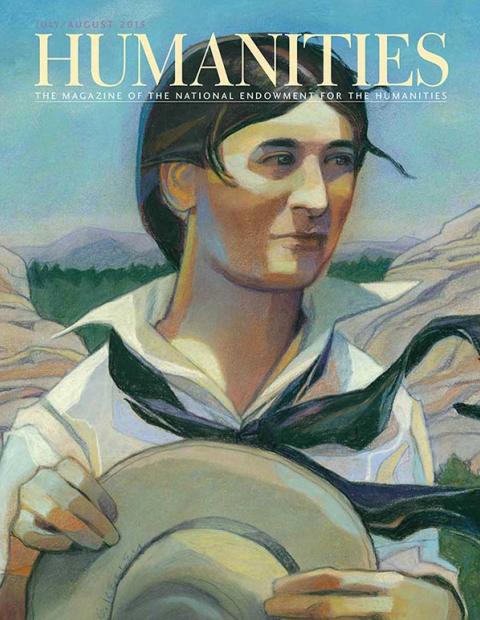Glenda Bell has been a junior high school teacher, a librarian and—perhaps most famously—a frontierswoman. She took the latter role in 1987 when she began appearing at cultural events in the persona of Martha Jane Canary, the Old West figure best known as Calamity Jane.
Today, the seventy-seven-year-old performer has about twenty-five hundred Calamity Jane shows to her credit.
Jane, who lived from 1852 to 1903, is famous for elbowing her way into the male-dominated Western frontier, refusing to view her sex as a hindrance. She was skilled with horses and firearms, and she drank heavily. That Jane played against feminine stereotypes and welcomed publicity added to her reputation as a Western icon.
“Basically, what she did was she put on a pair of britches and she just marched right into the male culture,” Bell says. “She didn’t do it because she was a feminist. She didn’t do it because she was on some mission. She did it to survive.”
In the late 1980s and early nineties, information about Calamity Jane was sparse, so Bell went to work, and she now has almost three decades of research under her belt. Amy McKinney, assistant professor of history at Northwest College in Powell, Wyoming, says only a handful of people in the world can match Bell’s expertise on Calamity Jane.
“She’s been doing this a long time, but she doesn’t just do the same shtick that she’s been doing for twenty years,” McKinney says. “She’s always looking for ways to expand her knowledge.”
Bell digs through books, newspapers, magazines, historical documents, and oral histories to learn about her character. It’s tricky because much of what’s written about Jane is either exaggeration or myth.
“I’ve got over twenty four hundred citations where Calamity Jane is mentioned,” Bell says. “I’ve only got forty-four primary, firsthand sources.”
That means Bell must cross-check “facts” and use existing knowledge to determine whether newly discovered stories are even plausible. Even after this, Bell says, it’s difficult to separate reality from legend. “I always say at the end of the performance,” Bell explains, “this has been the truth . . . mostly.”
Through most of her performing career, Bell was partnered with Barbara Fisher. The latter would introduce and conclude the programs, and Bell would fill the middle with a first-person portrayal of Jane. Around 2008, Bell went solo when Fisher developed Alzheimer’s, to which she succumbed in 2012.
These days, Bell says, her shows are best described as energetic and entertaining lectures that include—but aren’t centered on—a first-person portrayal of Jane. Bell and Fisher would deliver about one hundred fifty Calamity Jane performances each year at their peak. Today, Bell is down to about twenty-five shows, most presented through the Wyoming Humanities Council. Some performances center on Jane, and others focus on Jean McCormick, a woman who, in 1941, gained fame by claiming to be the daughter of Jane and “Wild Bill” Hickok. Bell says McCormick’s claim was false, as is most information surrounding Jane and Hickok’s relationship.
What’s undisputed is Jane’s lively character and clever shenanigans, and Bell illustrates this through stories. For instance, she tells of Jane’s ability to best men in poker games by feigning ignorance of the rules. One of Jane’s common ploys, Bell says, was to ask fellow players if a hand containing four ladies was considered two pair or four of a kind. Then, she’d wait for the men to fold.
“She pulled that time after time after time,” Bell says. “So, she could come into money any time she wanted.”
Bell says one thing most people don’t know about Jane is that she spent a lot of time in Colorado. Bell hopes to learn more about that era herself. Recently, she left her longtime home in Powell to move closer to family in Fort Collins, Colorado, and thinks the move could lead to new research discoveries.
“It’s still an adventure,” Bell says. “One of the great joys is going into a small town that has a little old library where they’ve never thrown a thing away.”

